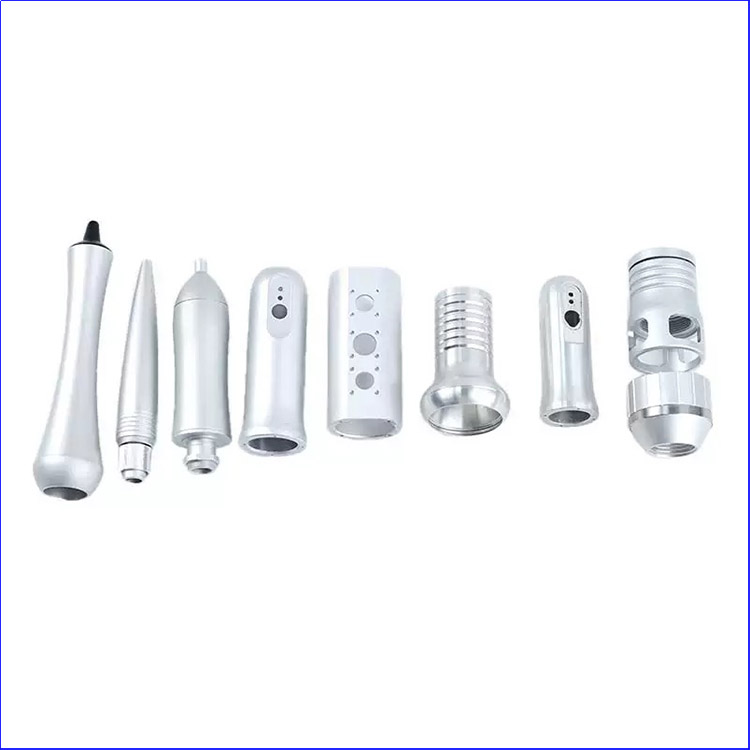What is Aluminum Machining?
2025-11-04
Aluminum Machining refers to manufacturing processes focused on the following:
Changing the shape of aluminum alloy raw material blocks through mechanical processes such as turning, cutting, and grinding, whether conventional or CNC-controlled—these can be collectively referred to as aluminum processing.
Changing the shape of aluminum alloy blocks by rolling or bending them to their elastic limit (natural cold working, extended hot working) is called plastic working of aluminum, performed, for example, on CNC press brakes.
Additional surface treatments are performed to improve the mechanical properties of aluminum alloys or enhance their natural corrosion resistance (aluminum plating), such as anodizing.
Types of Aluminum Machining
It is worth expanding the above classification to include machining, forming, chemical processing, and casting of aluminum alloys. Today, many industries require specialized parts made from various aluminum alloys. The most common type of aluminum processing is aluminum milling, which can be categorized as:
Aluminum milling—removing excess material from aluminum blocks using milling cutters and specialized cutting equipment (automatic numerically controlled milling machines: CNC). This process can produce parts with very complex external and internal structures.
(For example, using a five-axis CNC milling machine).
Aluminum turning—focuses on removing excess material from an aluminum block rotating on a turning head using specialized blades or drills. This process is used to create objects where one axis rotates along a circular path.
Aluminum grinding—is used to finish the surface of aluminum.
These processes can be performed using both conventional cutting machines and CNC machine tools.

Key Advantages of Aluminum Alloys
Aluminum alloys possess numerous properties, but the following are particularly important from the perspective of the quality of the parts they produce:
Despite their light weight, they offer uncompromising durability—the tensile strength of aluminum alloys (depending on the alloy used) starts at 70 MPa and reaches up to 700 MPa. This strength increases at low temperatures, a significant difference from most steels. Research by Professor Michael Stacey has shown that aluminum can last up to 80 years—a performance unmatched by any other material (this research was conducted on aluminum window frames).
Corrosion Resistance—When aluminum parts come into contact with the atmosphere, a layer of aluminum oxide forms on their surface, protecting them from corrosion under moderate sulfation conditions. While pitting corrosion doesn't affect durability, it can be unsightly—it forms a distinctive white film on the surface. This can be prevented by anodizing or powder coating the aluminum.
Most aluminum alloys are easy to machine—both cutting and forming (depending on the alloy).
Aluminum alloys are good conductors of electricity—making them valuable materials in electrical engineering for their thermal conductivity (for example, in heat-dissipating components like heat sinks or heat sinks) and electrical conductivity (aluminum conductors were once used in older electrical equipment; it's worth noting that anodizing reduces electrical conductivity to almost zero, which is why it's such a valuable process in the production of power equipment components).
They are environmentally friendly—many aluminum alloys can be remelted with virtually no loss of performance (recycling aluminum requires about 5% of the energy required to extract the same amount of metal from ore).
Aluminum Processing Across Industries
Today, aluminum alloys are widely used in nearly every industry. Aluminum parts are lightweight, have good mechanical properties, and are resistant to corrosion, making them suitable for a wide range of applications:
Aerospace—This industry was the first to seek CNC turning services for aluminum and other metals in the 1950s. Aluminum is currently a base metal for the production of a wide range of civilian and military aviation components.
Automotive Industry: Aluminum parts are lightweight and highly corrosion-resistant, making them widely used by automobile and auto parts manufacturers—from engine blocks (where aluminum has largely replaced cast iron) to entire vehicle frames, down to small decorative trims or wheels.
Energy Industry: The lightweight frames of photovoltaic panels withstand all weather conditions, reducing maintenance while ensuring high technical specifications for many years.
Military Industry: Aluminum is an essential material for the production of modern weaponry, such as the MSBS Grot carbine.
Electronics Industry: Most home appliance and automotive parts manufacturers use aluminum due to its light weight and ease of processing.
Electronic products (from mobile phones and frames to tablets, refrigerators, and washing machines) contain a variety of large and small parts made of aluminum alloy, which often require cutting, among many other components.
Precision Aluminum machining and Unique Designs
Aluminum is also widely used for its aesthetic value. Its silvery-white color, the ability to undergo additional surface treatments, and its ease of processing make it a popular choice for producing high-quality products that combine aesthetic design with durability.
The various possibilities offered by CNC aluminum machining inspire many designers and engineers to use structural design to give products a unique appearance.



